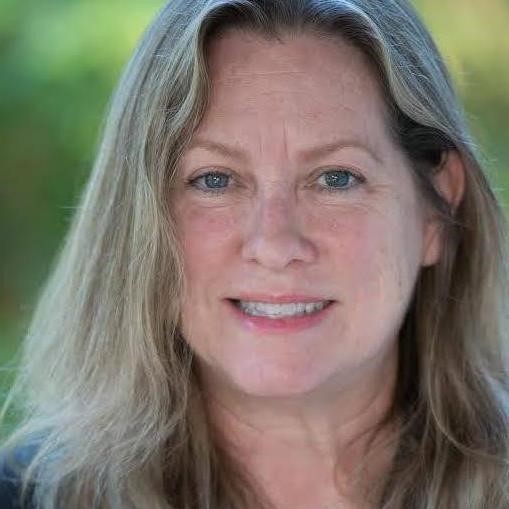As the song goes, “it’s not easy being green,” but Clayton P. King manages to make it look effortless. Surrounded by a large cast of veterans and newcomers, King’s portrayal of the grumpy and reclusive title role in Chapin Theatre Company’s Shrek: The Musical is not only enjoyable, but also could serve as an unofficial master class for aspiring character actors. Expertly costumed and clad in full body padding, latex hands and headpiece, and a thick layer of makeup that would make The Wicked Witch Of The West pea-soup hued with envy, the well-known local singer/actor is almost unrecognizable, but brings his usual flair and knack for interpreting a part to the Harbison Theatre stage. There’s a hint of Mike Meyers’ original screen incarnation in King’s portrayal, but he definitely makes it his own, presenting the audience with a slightly gentler, yet still comically fierce Shrek, who never relies on imitation. While some cartoon characters work splendidly when embodied by real-life actors, others falter somewhere in translation. (For every You’re A Good Man, Charlie Brown, there’s a Doonesbury, which proves that simply plonking down the inhabitants of a successful ink-and-paper universe onstage isn’t a guaranteed recipe for success.) Luckily, Shrek: The Musical makes the leap with room to spare, with its charm and middle-school affinity for the hilarity of flatulence fully intact. Indeed, one of the show’s highlights is a belch-and-poot contest duet between Shrek and Fiona (Korianna Hays.)
As Fiona, Hays matches King’s expertise with a skill set honed through years of experience ranging from Shakespeare to Something Very Fishy, an original musical for children which teaches marine conservation through song and dance. Though she may have grown up in a tower, awaiting her knight, this Fiona is no fragile flower, and Hays artfully creates a spunky, self-sufficient young woman who can clearly handle herself in any situation. On a side note, the next generation of stage performers is well represented, with adult Fiona singing a trio with herself (herselves?) in childhood and teenagerhood. Katy Grant and Abby Tam play Young and Teen Fiona respectively, and are in fine voice, blending perfectly with Hays in their musical growing-up montage. Carter Tam makes a brief but noteworthy appearance as Young Shrek, as well.
The supporting cast is uniformly strong, with Major McCarty handing in a hilarious and over-the-top camp turn as the diminutive tyrant, Lord Farquaad. As he clearly revels in the distinction of being one of the only characters to break the fourth wall, McCarty’s performance brings to mind the delightfully shameless mugging of a young Paul Lynde or Charles Nelson Reilly, complete with demands for applause and cheeky asides to the audience. Along for the ride is first-timer Gerrard Goines, who keeps up with his more experienced co-stars in the role of Donkey. As does King, Goines takes a pinch of the film character (voiced by Eddie Murphy) and then puts his own spin on Shrek’s ever-faithful, if beleaguered best friend and traveling companion. A splendid singer with a natural comic’s timing, Goines will most certainly be seen again on local stages.
Other standouts include powerhouse vocalist Jas Webber, who brings the Dragon to saucy, sassy life, and Michelle Strom as Gingy, the Gingerbread Man of nursery-rhyme fame, whose scene with McCarty veers rib-ticklingly into the waters of British pantomime as they transform the lyrics to “Do You Know The Muffin Man” into mock-serious banter. Similar nods to multiple pop culture phenomena throughout the ages, from Monty Python to Friends, are peppered throughout the show, including a second-act opener featuring Busby Berkeley style tap choreography, a trio of Motown-esque Blind Mice, and a final line plucked straight from the pages of Dickens. (There are other Easter Eggs as well, but I’ll let you enjoy looking for them.)
The ensemble is the backbone of any musical, and this one does not disappoint. There isn’t a weak link to be found, and the script provides plenty of opportunities for all, with pretty much every cast member having a spotlight moment or two. The commitment to the wacky reality of their world is clear, and in-jokes abound, from a mid-thirties Peter Pan needing a shave to a wisecracking, beehive-haired Sugar Plum Fairy. There’s no official Costume Designer credited, so I’ll offer kudos to the show’s Co-Directors, Tiffany Dinsmore and Meesh Hays, who managed to bring just about every character from the Mother Goose canon to the Harbison stage, in authentic and easily identifiable outfitting, with a color palette of bright primaries and soft pastels that perfectly reinforce Shrek: The Musical’s cartoon pedigree.
A wide swath of choreographic styles, from traditional “old school” musical theatre to contemporary, intertwine throughout, courtesy of Choreographers Meredith Boehme and Katie Hilliger, who have taken a group with varied levels of experience and made them all look like trained pros. While some routines are more complex than others, there’s no hint of anything being simplified or watered down. Boehme and Hilliger have obviously choreographed to the strengths of their cast, allowing dancers and non-dancers alike to move with what looks like effortless ease. Musical Director Mary Jo Johnson has clearly worked the vocals well, with soloists and group numbers both coming in strong and solidly supported.
On the technical side, Danny Harrington’s set design is whimsical and fully realized, often operating in an almost Transformers style, with a series of hinges, individual pieces, and large units blending nicely with flown-in backdrops. All scene changes are done in full view, allowing the show to progress uninterrupted, which adds a touch of magic to an already enchanting production. Laura Anthony’s light design is subtle and most effective, utilizing shadows and isolated sections of the stage to create everything from the suggestion of overhead foliage to a starlit night, blending nicely with Harrington’s set.
Flaws are few and far between in this production, but if one must be nit-picky, there were a couple of less-than-perfect moments in Sunday’s matinee performance. The show moves at a comfortably brisk pace, but the trade-off is that a few lines and bits seemed rushed, and a couple of the higher-pitched speaking voices were slightly difficult to understand, especially with the added challenge of using distinctive speech patterns to create fairy-tale characters. The large ensemble numbers in the first act seemed a bit vocally muddled, but clear diction prevailed by act two, so perhaps it just took a little time for my hearing to adjust to the combination of character voices and sometimes- intricate wordplay within the lyrics. The set, while sumptuous, has clearly been nicked and scratched in a few spots during what must have been a demanding tech week, but there’s nothing that a couple of dabs of paint here and there wouldn’t fix.
Shrek: The Musical is a massive undertaking, and Chapin Theatre Company has risen to the challenge with high production values, a sleek and streamlined visual quality, and a uniformly talented and capable cast who are clearly having great fun with the material. This isn’t a deep, thoughtful, drama, but it never pretends to be anything it isn’t. It’s a funny, lighthearted, and joyful confection which doesn’t take itself too seriously. Get ready to laugh, enjoy the inherent goofiness of it all, and make the short drive out to Harbison Theatre at Midlands Technical College for a winning performance. The production continues its run with shows this Thursday and Friday at 7.30pm, and 3.00pm matinees on Saturday and Sunday.
- FLT3
Frank Thompson is proud to serve as Theatre Editor for JASPER.



















































